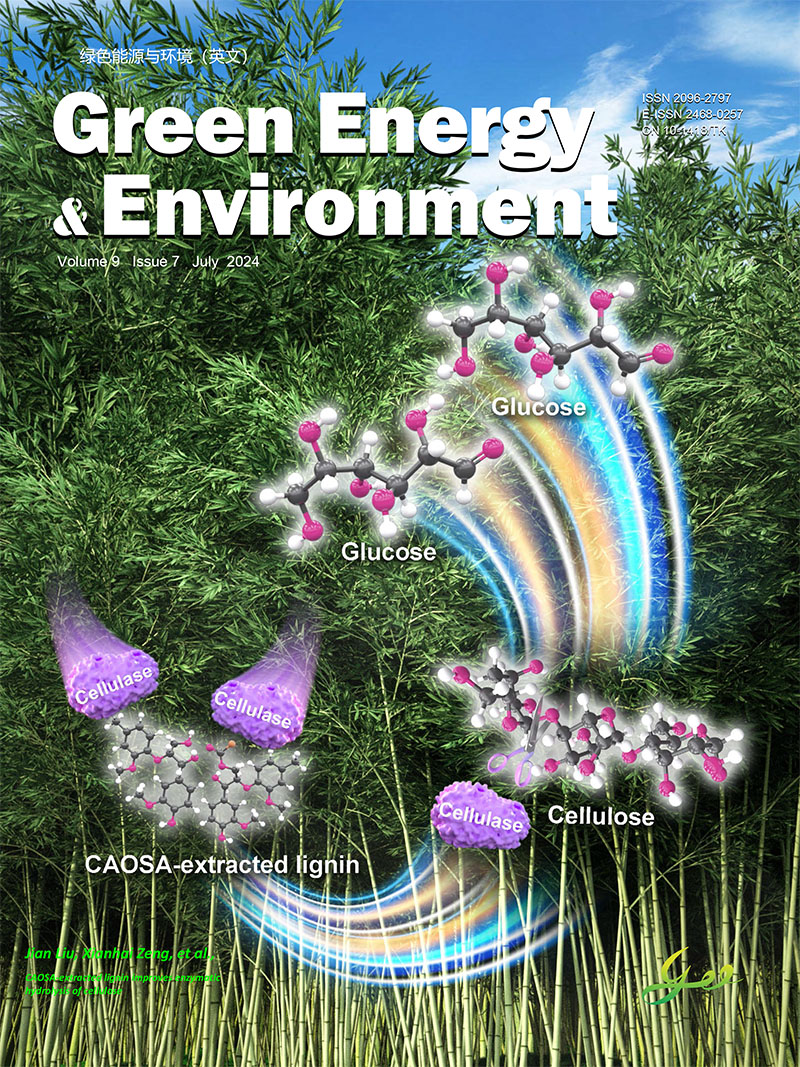2022, 7(6): 1318-1326.
doi: 10.1016/j.gee.2021.02.004
Abstract:
Co-pyrolysis of lignin and waste plastics, for example polyethylene (PE), has been studied, but related reports are basically on condition optimizations. This study revealed a new perspective on PE-promoted lignin pyrolysis to phenolic monomers with mass transfer and radical explanation. Lignin and PE were first pyrolyzed individually to identify pyrolysis characteristics, pyrolytic products, as well as the suitable co-pyrolysis temperature. Then, co-pyrolysis of blended lignin/PE with various ratios was investigated. Yields of lignin products reached the maximum under lignin/PE ratio of 1:1, but blended approach always inhibited the production of lignin phenols. This resulted from the poor mass transfer and interactions between lignin and PE, in which PE pyrolysates could easily escape from the particle gaps. While in layered approach, PE pyrolysates had to pass through the lignin layer which contributed to the good interactions with lignin pyrolysis intermediates, thus the yields of lignin-derived products were significantly improved. Interactions between lignin and PE (or their pyrolysates) were mainly radical quenching reactions, and X-ray photoelectron spectrum (XPS) and electron paramagnetic resonance (EPR) of pyrolytic chars were conducted to verify these interactions controlled by mass transfer. The percentage of C==C (sp2) and concentration of organic stable radicals in layered lignin/PE char were both the lowest compared with those in blended lignin/PE and lignin char, indicating the stabilization of lignin-derived radicals by PE pyrolysates. Moreover, the spin concentration of radicals in the char from layered char/PE was lower than that in lignin char, which further affirmed the quenching of radicals by PE in the layered co-pyrolysis mode.
































 京公网安备 11010802039050号
京公网安备 11010802039050号